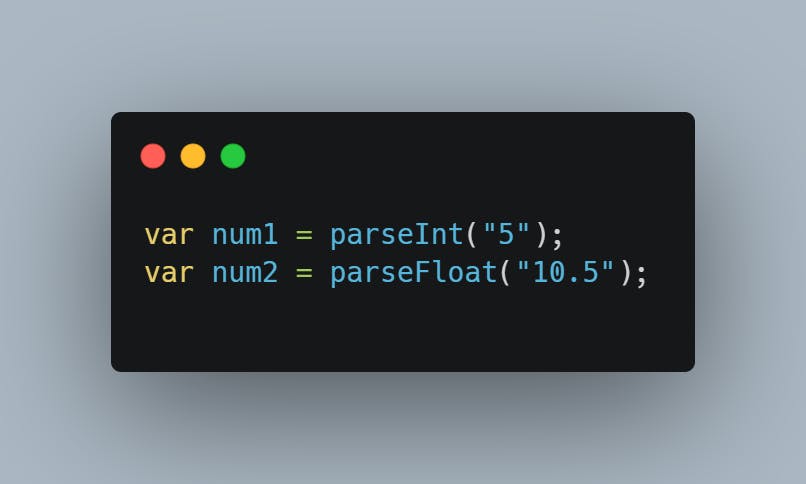JavaScript numbers are a type of data that can be stored in variables. In JavaScript, there are several ways to create numbers. The most common way to create a number is by using the Number() constructor. Numbers can be created from strings, by using the parseInt() and parseFloat() functions. You can also use the Math object to generate random numbers, or to perform mathematical operations on numbers.
-JavaScript numbers are a type of data that can be stored in variables.
JavaScript numbers are a type of data that can be stored in variables. In JavaScript, there are two types of numbers - integers and floating-point numbers. Integers are whole numbers, positive or negative, while floating-point numbers are fractional numbers.
-You can store a number in a variable by simply assigning the value to the variable name:
 If you try to store a non-numeric value in a numeric variable, JavaScript will attempt to convert the value to a number:
If you try to store a non-numeric value in a numeric variable, JavaScript will attempt to convert the value to a number:

- In JavaScript, there are several ways to create numbers.
In JavaScript, there are several ways to create numbers. The most common way is to use the built-in Number constructor. For example:

Another way to create numbers is to use the parseInt() or parseFloat() functions. These functions take a string as an argument and return a number. For example:

You can also use + to convert a value to a number.This is often used with variables that contain strings. For example:

- The most common way to create a number is by using the Number() constructor.
The Number() constructor is the most common way to create a number in JavaScript. When called with the new keyword, it creates a new Number object. The Number object can be used to represent any number, including infinity and NaN (not a number).
To create a number from a string, you can use the Number() constructor or the parseInt() or parseFloat() functions. For example, the string "1234" can be converted to the number 1234 using either of these methods.
You can use + to convert values to numbers.This is often used when converting strings to numbers, as it is more concise than using the Number() constructor. For example, the string "1234" can be converted to the number 1234 using the unary + operator.
- Numbers can be created from strings, by using the parseInt() and parseFloat() functions.
The parseInt() function is used to convert a string to an integer. The function takes two arguments: the string to be converted and the base of the number in the string (e.g. 10 for decimal, 16 for hexadecimal). If the base is not specified, it defaults to 10. The function returns NaN if the string cannot be parsed as a number.
The parseFloat() function converts a string to a floating-point number. The function takes one argument: the string to be converted. If the string cannot be parsed as a number, the function returns NaN.
Both parseInt() and parseFloat() can be used to convert strings to numbers in JavaScript.
- You can also use the Math object to generate random numbers, or to perform mathematical operations on numbers.
The Math object is a built-in object that has properties and methods for mathematical constants and functions. One of its methods is Math.random(), which returns a random number between 0 and 1. To get a random integer between two numbers, you can use the Math.floor() or Math.ceil() methods. floor() rounds a number down to the nearest integer, while ceil() rounds a number up to the nearest integer.
You can also use the Math object to perform mathematical operations on numbers in JavaScript. For example, Math.round() rounds a number to the nearest integer, while Math.pow() raises a number to a specified power. The Math object also has constants such as Math.PI and Math.E that can be used in mathematical expressions.
conclusion
In conclusion, there are several ways to create numbers in JavaScript. The most common way is to use the Number() constructor, but you can also use the parseInt() or parseFloat() functions, or the unary + operator. The Math object can be used to generate random numbers or to perform mathematical operations on numbers.
